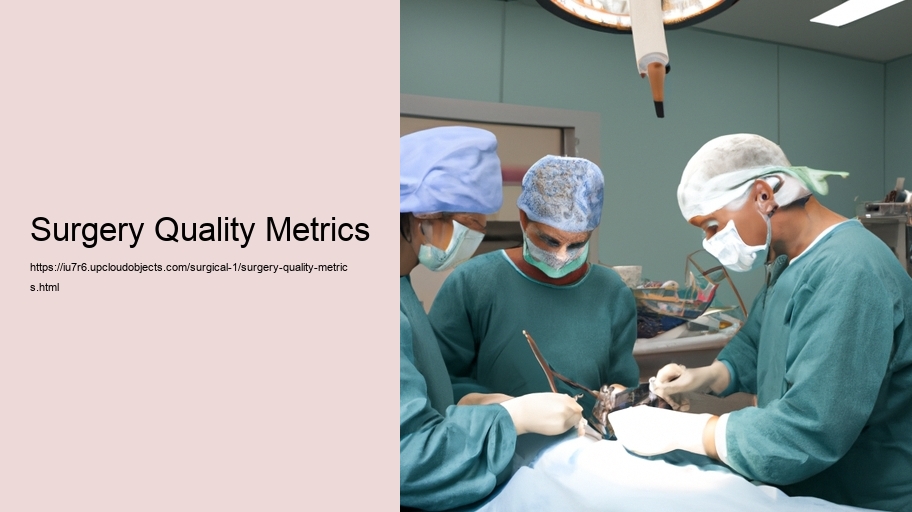Surgery Quality Metrics: Ensuring Excellence in Surgical Care
The realm of surgery, with its intricate procedures and potential for profound impact on human lives, demands a stringent focus on quality. Surgery quality metrics are the tools we use to measure and improve the care that patients receive before, during, and after surgery. These metrics allow healthcare providers to evaluate the effectiveness and safety of surgical interventions, ensuring that patients receive the best possible outcomes.
Quality metrics in surgery span a broad range of indicators, from the rate of surgical infections to the precision of the surgical procedure itself. Each of these metrics offers a glimpse into the complex tapestry of factors that contribute to surgical success. By examining these indicators, medical institutions can identify areas for improvement and establish best practices that lead to enhanced patient care.
One of the primary quality metrics in surgery is the rate of postoperative complications. These complications can include infections, blood clots, or unexpected reactions to anesthesia. A low rate of such complications is indicative of a high-quality surgical environment, where meticulous attention is paid to sterilization processes, surgical technique, and postoperative care. Reducing these complications not only improves patient outcomes but also lessens the burden on healthcare systems by reducing the need for additional treatments or extended hospital stays.
Another critical quality metric is patient mortality rates associated with surgical procedures. While some risk is inherent in any surgery, an abnormally high mortality rate can signal problems within the surgical process or patient management. Hospitals and surgical centers closely monitor these rates to ensure that they are within acceptable limits, and if they are not, they take immediate steps to investigate and rectify any underlying issues.
Patient satisfaction is also a key quality metric. In the context of surgery, patient satisfaction encompasses not only the outcome of the surgery but also the patient's experience with preoperative and postoperative care. Communication with healthcare providers, the adequacy of pain management, and the provision of clear post-surgery instructions all contribute to a patient's overall sense of satisfaction. High levels of patient satisfaction are often correlated with better adherence to postoperative instructions and, consequently, better recovery outcomes.
Surgical site infection rates are a particularly telling metric. These infections can significantly delay healing and increase the likelihood of additional surgeries or treatments. Hospitals and surgical teams work tirelessly to minimize these rates through stringent antiseptic procedures and vigilant postoperative care.
Timeliness of care is another important metric, which refers to the time it takes for a patient to move through the surgical process, from admission to discharge. Delays in surgery can increase the risk of complications and decrease patient satisfaction, while efficient surgical workflows contribute to better resource utilization and cost savings for healthcare facilities.
Furthermore, the readmission rate is a crucial metric for assessing the quality of surgical care. A high rate of readmission can indicate problems with the surgery or with the postoperative care. Lower readmission rates suggest that patients are recovering well and that the surgery was successful in treating the initial problem.
Finally, adherence to evidence-based guidelines is a benchmark for surgical quality. When surgical teams follow well-researched and established protocols, patient outcomes improve. This metric requires constant updating of surgical practices in line with the latest research findings and best practices.
In conclusion, surgery quality metrics are vital for ensuring that surgical procedures are both safe and effective. They provide a framework for continuous improvement in surgical care by highlighting successes and identifying areas in need of attention. As the healthcare landscape evolves with technological advancements and new medical knowledge, these metrics will continue to play a pivotal role in guiding surgeons and healthcare institutions towards the highest standards of patient care. By focusing on these metrics, we can assure patients that their health and safety are of utmost importance and that the surgical care they receive is held to the highest possible standards.
